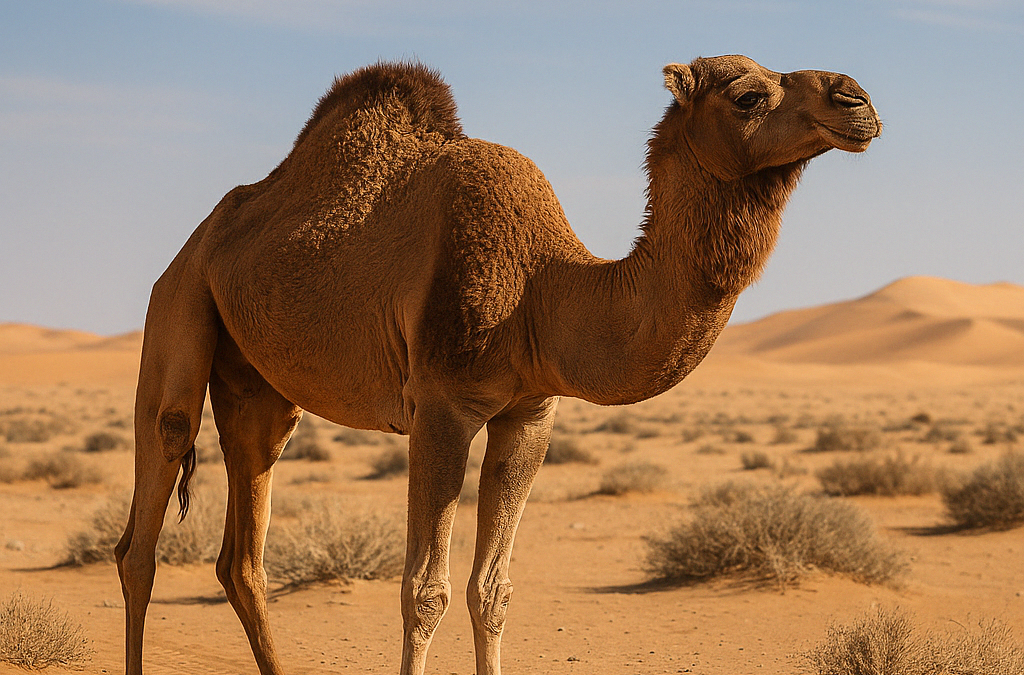The Camel (Camelus): Master of the Arid Deserts
Introduction
Often called the “ship of the desert,” the camel is an iconic animal of arid and semi-arid regions. Thanks to its incredible adaptability, it is an essential companion for nomadic populations in the Middle East, Central Asia, and North Africa. Enduring, resilient, and fascinating, the camel plays a key role in desert ecosystems.
Physical Characteristics
-
Scientific name: Camelus dromedarius (one-humped dromedary) and Camelus bactrianus (two-humped Bactrian camel)
-
Height at the shoulder: 1.8 to 2.3 m
-
Weight: 300 to 1,000 kg depending on the species
-
Lifespan: 40 to 50 years
-
Notable feature: One or two humps that store fat (not water, contrary to popular belief)
The camel has long, powerful legs and wide feet adapted to walking on sand. Its thick coat protects it from the scorching sun during the day and the cold at night. Its nostrils can close to block sand, and its long eyelashes shield its eyes from wind and dust.
Remarkable Adaptations to Desert Life
Camels are survival champions in extreme conditions:
-
Can lose up to 30% of their body weight in water
-
Survive for several days without drinking
-
Withstand temperatures ranging from -20°C to +50°C
-
Extremely concentrated urine and feces to minimize water loss
-
Regulate body temperature to reduce sweating
Habitat and Geographic Distribution
Camels are primarily found in:
-
The Middle East
-
The Sahara and Sahel (North Africa)
-
Central Asia (Kazakhstan, Mongolia, China)
Dromedaries are more common in hot, dry regions, while Bactrian camels are adapted to colder, continental climates.
Lifestyle and Behavior
Camels are social animals, often domesticated and living in herds led by a dominant male. As herbivores, they feed on thorny plants, dry leaves, and vegetation that many other animals avoid.
Reproduction:
-
Sexual maturity: 3 to 5 years
-
Gestation: approximately 13 months
-
Litter: 1 calf (rarely 2)
-
The newborn can walk within hours of birth
Ecological and Economic Importance
Camels are vital to pastoral societies:
-
Means of transport (caravans, riding)
-
Sources of milk, meat, leather, and wool
-
Natural fertilizer via their droppings
-
Highly resilient to climate change
Fascinating Camel Facts
-
Camel milk is highly nutritious, rich in vitamin C and iron
-
Can drink over 100 liters of water in just a few minutes
-
Their unique pacing gait (called ambling) provides great stability
-
In Mongolia, camels are sometimes used in traditional racing
-
The dromedary is the only large mammal that can remain active in the desert without shade
Conclusion
The camel embodies resilience, endurance, and adaptation. As climate challenges intensify, this majestic creature stands as a model of survival for both humans and fragile desert ecosystems.

